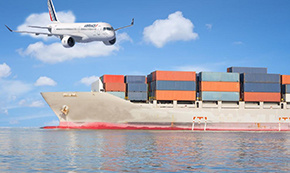All categories >
Dangerous goods identification report in logistics documents
Categories:
News Center
Time of issue:
2024-10-18 18:08
Views:
In the logistics documents, the dangerous goods appraisal report is a written report issued after the professional appraisal of whether the goods belong to dangerous goods.
1. Report Contents
Cargo Information:
Describe in detail the name, specification, model, quantity and other basic information of the identified goods. This information is essential to accurately determine the nature and potential hazards of the goods.
For example, if it is a chemical, it will specify its chemical name, molecular formula, purity and other specific parameters.
Hazard analysis:
A comprehensive analysis of the hazards of the goods, including but not limited to physical hazards, chemical hazards and health hazards.
Physical hazards may involve properties such as explosion, flammability, oxidation, corrosion, etc. For example, certain flammable and explosive materials may cause explosions under certain conditions, and their explosion limits will be specified in the report,Flash Pointand other key parameters.
Chemical hazards include the possibility of reaction with other substances, the risk of producing toxic gases or harmful substances, etc. For example, certain chemicals may react violently when in contact with water, releasing toxic gases.
Health hazards mainly refer to the possible impact of the goods on human health, such as toxicity, irritation, carcinogenicity, etc. The report will be based on the relevant standards and test methods to assess the potential hazards of the cargo to the human body.
Identification basis:
Clarify the standards and regulations on which the identification is based. Different countries and regions may have different definitions and classification standards for dangerous goods. Therefore, it is necessary to clarify the standards and regulations adopted in the appraisal report so that relevant parties can accurately understand the authority and applicability of the report.
Common identification bases includeInternational Maritime Dangerous Goods Code(IMDG Code), United Nations Recommendations on the Transport of Dangerous Goods (UN Recommendations on the Transport of Dangerous Goods), etc.
Identification conclusion:
According to the analysis and identification of the goods, a clear conclusion is given to determine whether the goods are dangerous goods. In the case of dangerous goods, further details such as the hazard category, item and packing grade to which it belongs will be provided.
For example, a shipment is identified as a Class 3 flammable liquid and has a Class II packaging rating.

2. role and importance
Ensure transport safety:
For logistics enterprises and transportation companies, dangerous goods identification report is an important basis for ensuring transportation safety. By understanding the dangerous nature of the goods, they can take appropriate safety measures, such as selecting the appropriate means of transport, packaging and storage conditions, to reduce the risk during transportation.
For example, for flammable and explosive materials, special explosion-proof transportation and packaging are required to prevent explosion accidents.
Compliance with regulatory requirements:
In international trade and logistics transportation, all countries have strict regulations and standards to regulate the transportation of dangerous goods. The Hazardous Material Identification Report is a necessary document for businesses to comply with these regulatory requirements.
For example, according to the International Maritime Dangerous Goods Code, all dangerous goods must be properly classified, packaged, marked and labeled before transportation, and accompanied by the corresponding identification report and transportation documents.
Safeguarding personnel health and environmental safety:
Dangerous goods may cause serious harm to human health and the environment. Through the dangerous goods identification report, the relevant parties can understand the potential hazards of the goods and take corresponding protective measures to ensure the health of personnel and environmental safety.
For example, for toxic chemicals, it is necessary to wear appropriate protective equipment during handling and transportation to prevent contact and inhalation of toxic substances.
In short, the hazardous material identification report plays a vital role in logistics transportation. It provides all parties with accurate information about the hazardous nature of the goods, helping to ensure transportation safety, compliance with regulatory requirements, and protection of personnel health and environmental safety.
Keywords:










